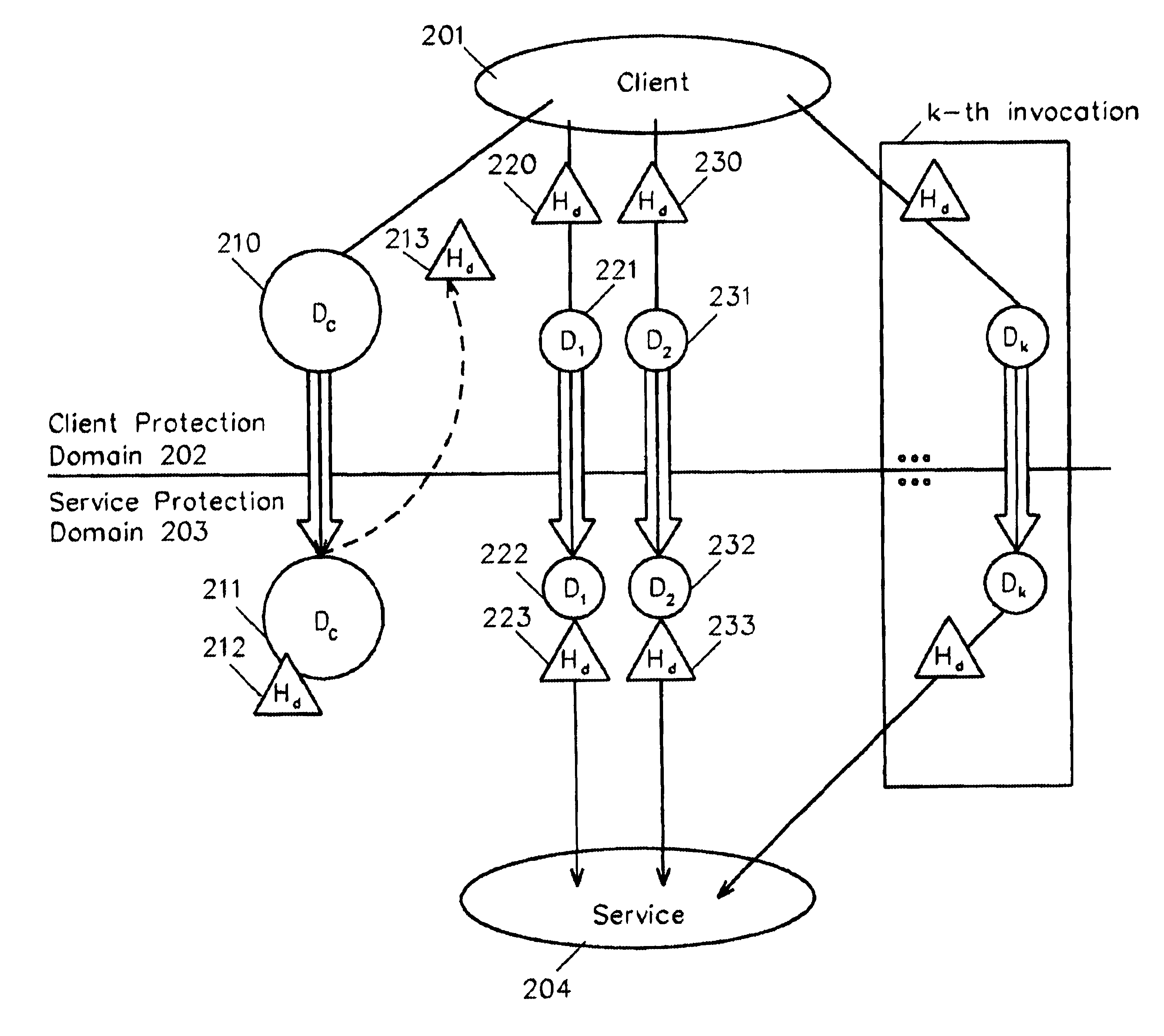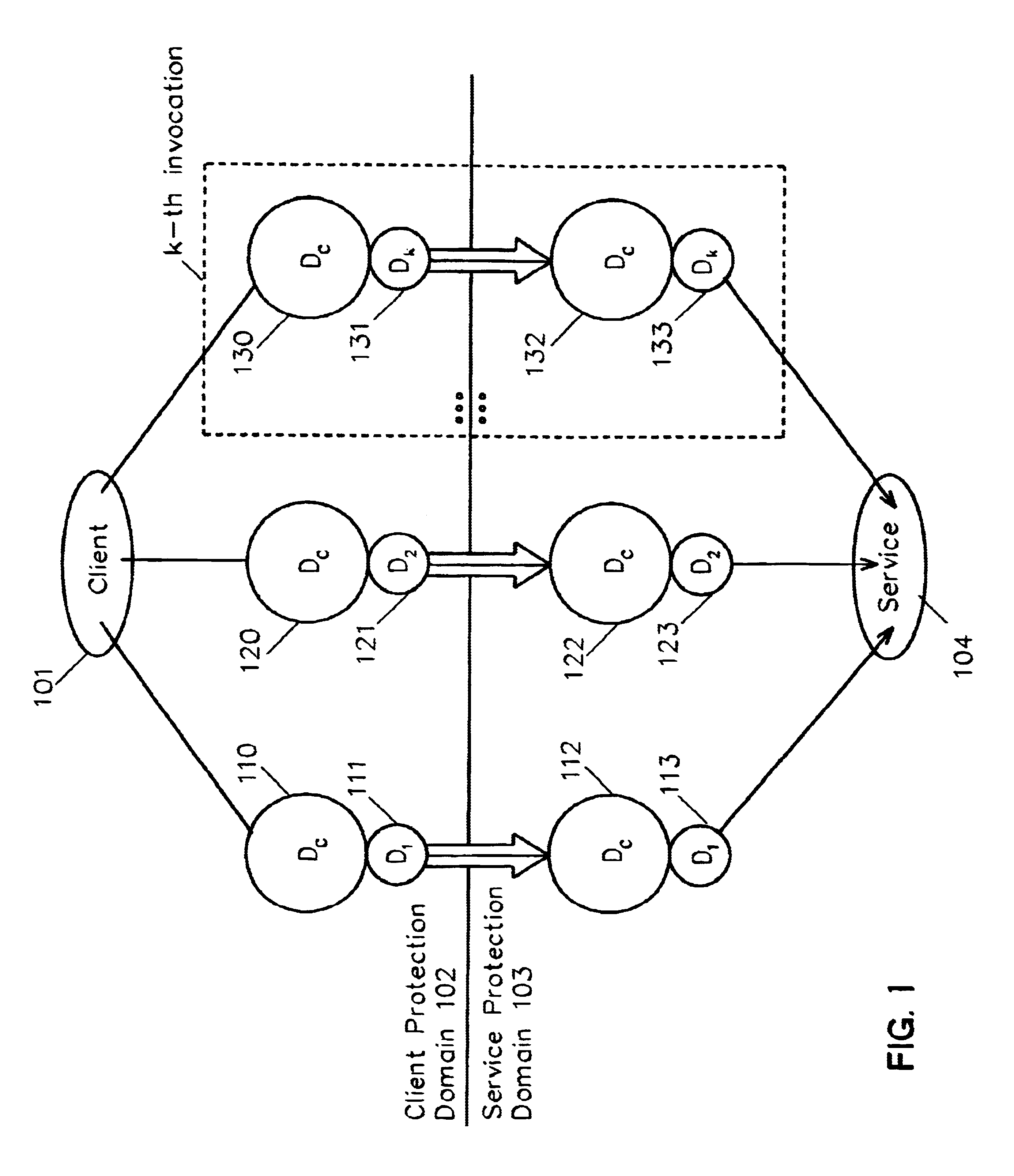Method and system for cross-domain service invocation using a single data handle associated with the stored common data and invocation-specific data
a service invocation and data handle technology, applied in the field of client service communication, can solve the problems of inefficiency of the combination of data transfer and service invocation, inability of the service to directly access the data on which the client requires, and insufficient resource utilization
- Summary
- Abstract
- Description
- Claims
- Application Information
AI Technical Summary
Benefits of technology
Problems solved by technology
Method used
Image
Examples
Embodiment Construction
[0016]FIG. 1 details the current, prior art method for performing an arbitrary sequence of service invocations with the same data. Examples of invoking multiple service invocations with the same data include sending the same data to multiple destinations and encrypting the same data with different keys. For the purpose of this part of the description, the example of a client application (101) sending some common data (e.g., a message) over a network to several distinct destinations using the service provider (104) will be detailed. In addition, while a client and a service protection domain are discussed, it should be understood that the inventive system and method encompass any plurality of client and service entities, regardless of their hierarchical relationship, whether on the same or different protection domains.
[0017]Conventionally, to perform k service invocations, or operations, on a common piece of data Dc, k transfer-and-service invocations are performed. Each invocation e...
PUM
 Login to View More
Login to View More Abstract
Description
Claims
Application Information
 Login to View More
Login to View More - R&D
- Intellectual Property
- Life Sciences
- Materials
- Tech Scout
- Unparalleled Data Quality
- Higher Quality Content
- 60% Fewer Hallucinations
Browse by: Latest US Patents, China's latest patents, Technical Efficacy Thesaurus, Application Domain, Technology Topic, Popular Technical Reports.
© 2025 PatSnap. All rights reserved.Legal|Privacy policy|Modern Slavery Act Transparency Statement|Sitemap|About US| Contact US: help@patsnap.com



